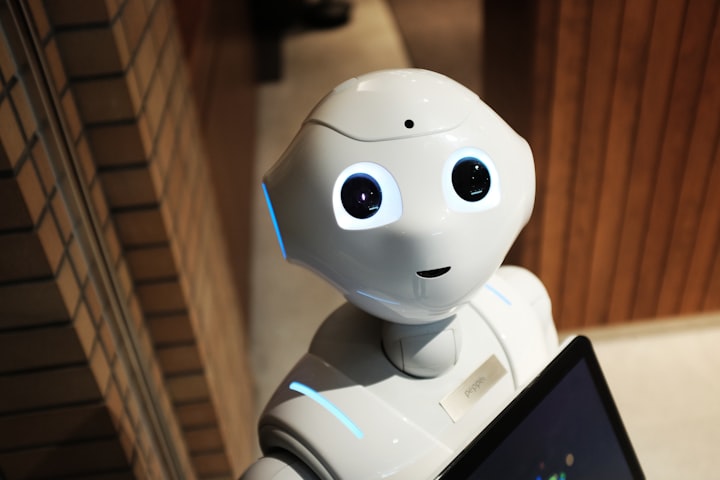
This year, accident involving self-driving cars made headlines, but there is another area where AI could reduce the number of deaths and injuries on our roads. Self-driving cars will not only reduce road deaths and injuries, but also change our lifestyles, according to a report of Stanford University. From increased comfort to reduced cognitive stress, self-driving cars and shared modes of transport will affect people's lifestyles.
These results will widen the gap between those who can afford to accept technological change and those who cannot. It is possible that we have discrimination on the basis of race as well as discrimination on the basis of technology and people merging.
We have already seen the beginnings of embedded communications systems that are likely to be used in military intelligence and advanced law enforcement units. As we progress in personal robotics and progress in autonomous drones and cars, autonomous military security systems are expected to become rogue states and be hacked from time to time.
Currently, companies like Inkonova have begun to develop drones with improvised flying and climbing skills with laser technology for scanner zones in places such as underground mine zones that are inaccessible to humans because of their discomfort with the environment. Possible applications include detecting corrosion in aging pipes before they leak (for example, in Flint's drinking water), tracking mass movements in cities and monitoring climate change in large areas.
With the development of mechanization and applied science, the possibilities of artificially created humans and robots are enormous. Humanity has not yet been touched by the advancement of robotic flying technology that can help people reach space.
According to Kurzweil, one of the leading futurists, the future growth mechanism of nanobots will be to improve scanning technology so that we can send them into people's brains to extract the memories of loved ones, even dead people. This technology is complemented by DNA samples, where we can extract DNA from people's memories and create a virtual and compelling version of ourselves. By 2050, nanorobots with nanoscale components will be created by connecting our brains to the cloud and thus immersing ourselves in a virtual nervous system.
Our ability to understand the weather and the natural world on a scale will be more powerful than ever, owing to advances in machine intelligence and connectivity. By 2069, Internet-enabled technologies will help people live longer, healthier lives. Tell us what you think connected technologies, platforms and applications will integrate into people's lives.
David Bray, Executive Director of the People Center Internet Coalition said: "There will be a number of disruptions to our current way of life - and how we humans will manage them for the benefit of the few... but we are already seeing an increase in the affordability and availability of technologies that were available to the vast nation states 20 years ago. There is room to dream of a successful world of new technologies.
The expansion is growing every year as more private and confidential technical and intellectual property is developed. The largest and most valuable technology company in the world.
If we look at the technological growth of the last ten years, we can see the enormous progress we have made in terms of new technologies and their application to our daily lives and our businesses. It is fascinating to see how future technological inventions will shape us as a company in 2050. We will look at some future technology projections for 2050 to understand how businesses will be affected by these new modern technological marvels.
In a 2016 article in Trends in Ecology and Evolution, I argued that humans favor a fusion of biology and technology. Digital technology has infiltrated the human society to a degree of indisputable, life-sustaining dependence. We spend most of our waking time communicating through mediated channels, we trust artificial intelligence with our lives like antilock brake systems in cars or autopilot on planes, and one in three marriages in America began with a digital algorithm that assumes the role of the human couple in marriage and reproduction.
In the last century, human civilization has changed dramatically, and these changes are reflected in the frequency with which we go to war. With the accelerating pace of technology, the question of the fate of human society is changing, and the changes are likely to be dramatic.
With changes looming, it is difficult to predict what the battlegrounds of the future will look like. The study of new technologies and changing dynamics allows for cautious conclusions and generalizations.
Last but not least, war is never predictable, and our attempts to predict future developments are likely to have limited success. Armies will be forced to adapt to changing circumstances and technologies, each offering new opportunities for calamity, chaos, and destruction. Since we are talking about 2020 in two years' time, let us see what opportunities it will bring us in 30 years' time.
According to Forbes, IoT technology will be included in 95% of electronics and new product designs by 2020. It is expected to be more connected to the cloud and the Internet by 2050.
We are developing a space industry to build these kinds of power plants from materials from other planets, low-gravity asteroids, etc. Construction costs are still high, and the technology will not compete with current energy sources, but there are ways to discover and lower the cost of creating Elon to shine.
Companies like Inkonova have begun building drones that can fly and climb using laser technology to scan an area and create a 3D map of it. There is also concern that robots will replace people who work in the healthcare sector. Areas such as pharmacy and professions such as medicine and nursing are threatened by robots and the emergence of new technologies for diagnosing diseases.
Smart swarms of dust are tiny sensors that collect large amounts of information about light, vibration and temperature over a large area. Such systems place communication servers and analysis systems in wireless computer networks that transmit this information.






Comments
There are no comments for this story
Be the first to respond and start the conversation.